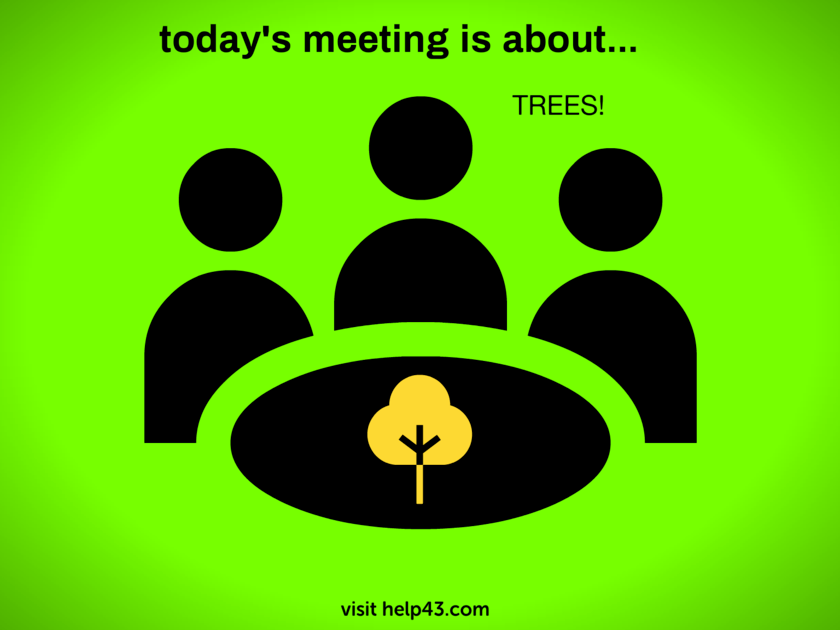Ai And Trees For Eco-friendly Businesses
Starting an ecofriendly business in today’s world goes way beyond using recycled paper or swapping out plastic straws. Companies are trying out new methods to protect the planet, and two things that keep popping up are artificial intelligence (AI) and trees. Combining digital smarts with green roots can be a solid move for any sustainable-minded company. I’m going to break down how AI and trees, together, can make a real impact on your ecofriendly adventure.
Why Ecofriendly Businesses Should Care About AI and Trees
Ecofriendly business ideas have exploded recently, but it’s easy to get overwhelmed by the choices out there. Businesses of all types, whether you’re running a popular online store or a neighborhood coffee shop, are feeling the pressure to shrink their carbon footprints and show real commitment to sustainability.
AI can help businesses work smarter, wasting less energy and resources, while tree planting helps balance out the carbon companies can’t eliminate. The combo packs a punch, especially when companies want both to grow and to protect the world around them. Using AI makes tracking, measuring, and reducing environmental impacts way more doable than it was just a few years ago. Many ecofriendly companies now make AI part of their day-to-day operations for this very reason.
For context, the demand for sustainable solutions is big and growing. According to a 2023 report from the U.S. Environmental Protection Agency, more than 80% of consumers prefer to buy from environmentally responsible brands. That’s a lot of people watching how companies act, and making choices based on it. This keeps pressure on businesses to keep up with the latest in ecofriendly strategies.
How AI Helps Drive Business Sustainability
When I mention AI, I’m talking about software and tools that can think, learn, and make decisions from data. For a business trying to stay ecofriendly, that can mean using AI to predict when equipment needs maintenance, spot wasteful spending, or plan better delivery routes to cut down on emissions.
- Energy Monitoring: AI can track and analyze how much power your business uses, then recommend ways to use less.
- Smart Logistics: AI can help companies map out faster, greener shipping routes. This not only saves fuel but also reduces emissions.
- Automation: AI can handle repetitive tasks, freeing up people for higher-value work and minimizing errors and waste.
Some companies are now using AIpowered sensors on their factory floors or in their office buildings to crunch data on electricity, water, and air conditioning. With automatic adjustments, these systems help slash waste and save on bills; both good for the environment and the bottom line. Microsoft and Unilever are just a couple of big names that shared public case studies on how their use of AI tools cut energy and material waste across global operations.
Additionally, AI can help businesses better forecast demand, reducing overproduction and unnecessary inventory. Think about automated climate controls, smart lighting systems, and predictive maintenance for equipment—each powered by AI to make resource use as efficient as possible. As AI tools get more advanced, smaller companies are now able to put these systems to work without huge startup costs.
Why Trees Matter for Sustainable Business
Trees are pretty much the OG carbon offset. They soak up carbon dioxide from the air, improve local biodiversity, and even help cool down cities. For businesses, planting trees or supporting reforestation projects shows they’re making efforts to balance the impact of what they can’t avoid emitting.
Besides being good for the planet, tree planting is also good PR. When customers see that a company is working with organizations like One Tree Planted or Trees for the Future, it adds credibility to the company’s sustainability claims. Companies from shoe brands to SaaS firms highlight their planting efforts on websites and in marketing materials because people actually respond to it.
Trees provide practical benefits, too. They help restore degraded land, protect soil, purify water, and create habitats for endangered species. If you’re not planting your own trees, offset programs let you fund professional reforestation to support projects all over the globe.
Tree planting doesn’t just benefit the environment; it also creates jobs, boosts local economies, and helps communities adapt to climate change. Businesses can tie tree planting directly to their sales and involve customers in the process, making it easy for everyone to make a difference together.
Simple Ways to Integrate AI and Trees Into Your Green Strategy
It’s not necessary to rewrite your business plan from scratch to take advantage of AI or tree planting. Small steps make a real difference. I’ve seen stores set up AIpowered checkout systems that track popular products so they stock smarter and waste less food. Others sign up for automatic monthly donations that plant a certain number of trees per sale.
- Start by Measuring: Use AI tools (or simple apps) to track your current resource use—energy, water, packaging. Many options, like JouleBug or EcoTrack, make this pretty easy.
- Find Ecofriendly Partners: Platforms like Ecologi let businesses automate tree planting per product or order.
- Automate What You Can: Tools that automate inventory, shipping, or even meeting scheduling cut out unnecessary energy use and paper.
What matters most is starting with what works for your business’s size and budget. Don’t feel pressured to make everything perfect right away; a few thoughtful changes add up over time. The key is to keep moving forward, even if progress is gradual. By building on each small success, your business can become steadily more sustainable.
Common Obstacles and How to Move Past Them
Going green, including embracing AI and planting trees, comes with a few hurdles. Here’s what typically trips businesses up, plus some advice on how to smooth things out.
- Cost: AI software and offset programs carry fees, and while many are affordable, some advanced solutions add up. Look for small, scalable tools or nonprofit partners to start with.
- Integration: Plugging new tech into your existing workflow sometimes gets messy. Test on a small scale before rolling it out everywhere.
- Visibility: Not every eco-action can be seen by the customer. Share what you’re doing on social media, in emails, and on receipts so people know how they’re helping.
- Results: It takes a bit for AI tracking and tree-planting impacts to show up. Set quarterly check-ins to see progress and keep enthusiasm high.
Costs and Benefits Balance
Any upgrade, whether AI, tree planting, or another initiative, feels like an investment. Over time, though, AI can bring cost savings by pointing out waste or improving efficiency, and planting programs help build loyalty. Many eco programs end up paying for themselves through savings, tax credits, or just happier, more loyal customers.
Tech Integration Tips
If your team feels overwhelmed by tech, it helps to choose userfriendly tools. Look for software with solid customer support and online tutorials. A phased rollout, starting with one department or location, keeps things manageable. Remember, tech adoption is often more about coaching your team and providing resources than about the tech itself.
Tips for Taking the First Step Toward Greener Business
Ecofriendly business practices get a lot easier when you start small and scale up. Here are a few places I’d recommend starting, based on what I’ve seen work:
- Pick a focus: Tackle one challenge at a time, like reducing energy use or adding carbon offsets per sale.
- Go digital: Move forms, payroll, and customer support online. Less paper waste, less hassle.
- Connect with the community: Partner with a tree planting group or local green nonprofit for events or funding drives.
A lot of the resources for ecoaction are already tried and tested. For example, many stores use Shopify or Squarespace plugins for tree planting per sale. For AI, there are offthe-shelf sustainability dashboards built for small businesses. If you’re not sure where to start, track down guidance from other businesses in your field, or hit up online boards to ask for specific tool recommendations.
Where AI and Trees Are Making a Difference
Several well-known companies have blended smart tech and greenery for real impact. Apple, for example, uses AI to optimize logistics and production, while supporting global reforestation projects. Clothing brands like Tentree not only plant trees per purchase but use AI to track where reductions and improvements can be made in their supply chain.
- Tech Integration: Using AI to fine-tune factory processes, so fewer resources are wasted and less energy is used.
- Offset through Growth: Planting trees to directly counterbalance emissions you can’t yet get rid of.
- Customer Involvement: Sharing progress updates and letting buyers “see” their tree, sometimes even on a map.
It’s totally possible to see results at a small scale, too. For example, a boutique might donate $1 from each sale to plant local trees, or a restaurant could use an energysaving scheduling app. These small moves can set you apart from the competition and build genuine connections with eco-minded customers.
There are lots of cases of even midsized businesses getting creative. Some subscription box companies include a tree-planted certificate in each box. Tech consultancies may offset client meetings by sponsoring tree plantings, and service businesses might host local community tree days. The possibilities truly are broad, and AI can help track impact so your business can actually see what’s working.

Frequently Asked Questions
Here are some practical questions I’ve heard from other business owners about using AI and tree planting for sustainability.
Question: Does using AI require hiring tech staff or coders?
Answer: Most AIpowered sustainability tools today are userfriendly and often come as simple software packages or apps, so you don’t need a computer science degree to get started.
Question: What’s the easiest way to start with tree planting?
Answer: Partner with established organizations that handle the logistics for you. Many will autocalculate the carbon offset for your operations, so you can donate monthly or per sale.
Question: How long before sustainability improvements show up in business results?
Answer: Some improvements, like energy savings, can show up in your next utility bill. Others, like customer loyalty or longterm carbon offsets, take a few months or longer to track.
Question: Are there risks with adopting new tech for ecofriendly goals?
Answer: Any new software or automation can take a little adjustment time, but most modern AI and sustainability-tracking platforms are designed to be reliable and straightforward. Starting with smaller tests and getting feedback from your team helps avoid most hiccups.
Final Thoughts
Bringing AI and trees into your business’s sustainability plan can feel like a big step, but even a few careful changes make a real difference. Whether you’re looking to shave down waste with smart tech or support a greener future by planting trees, every positive action counts toward building a planet-friendly business others respect and trust.
The more businesses that get on board, the better it is for everyone. It’s worth checking out some of the partners and tools mentioned here, and seeing what works best for your company and your community. Remember: progress is a series of small, consistent steps—and sticking with your ecoaction plan can shape a brighter, healthier future for everyone.
Botanicus Plus a GPT for starters and experts
Botnicus Plus boasts an array of new features, enhancing its global appeal and user interaction. These include: 1) Multilingual Support for accessibility in various languages. 2) Virtual Tours of famous botanical gardens and historical plant sites. 3) A Botanical Identification Tool for users to upload and identify plants. 4) Seasonal Guides and Tips tailored to local climates and regions. 5) Opportunities for users to engage in Collaborative Projects and Citizen Science Initiatives. 6) Advice on Sustainable Gardening Practices. 7) Interactive Q&A Sessions with botany experts. 8) Personalized Plant Care Reminders for gardeners. These features enrich Botnicus Plus’s mission to provide comprehensive, interactive, and culturally rich botanical education, fostering a deeper connection with the natural world.
Enjoy!👒
Invest in your future
Take time to learn
Embark on your journey in affiliate marketing and website creation alongside an incredible community and myself. Invest in your future by dedicating time to learn and earn. Take all the time you need to master the basics before aiming higher. Give it a try and sign up for free. You won't regret it! Discover the possibilities for yourself...


